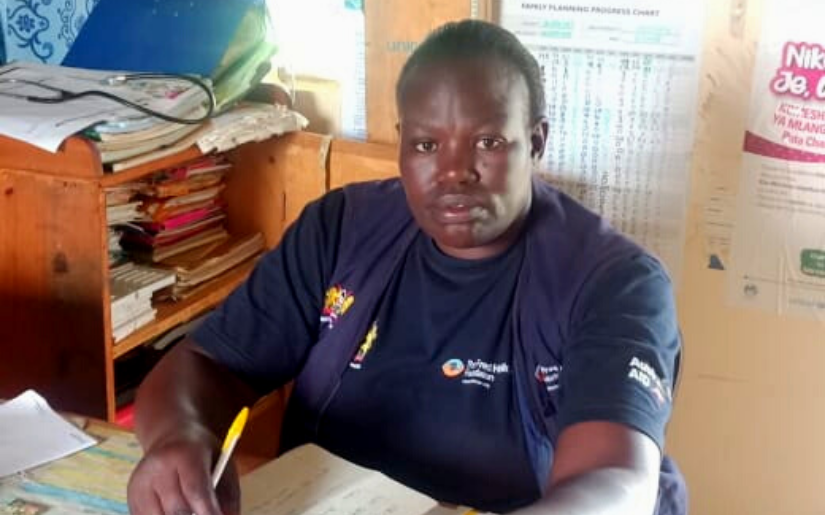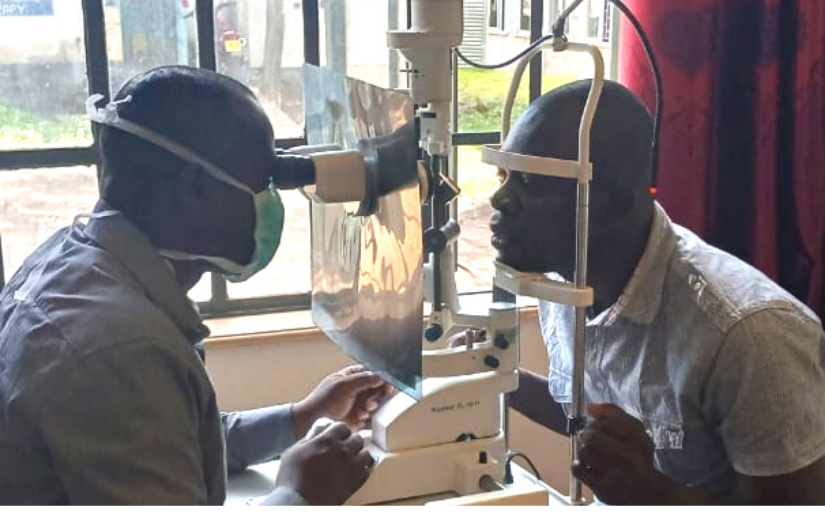The African continent is one of the last impacted by the global COVID-19 pandemic, but the virus is becoming a significant problem in many nations.
Global health authorities warn that it could devastate some of the world’s poorest countries where the health systems are not adequately equipped to deal with a pandemic.
International eye health organisation The Fred Hollows Foundation this week spoke to Kenyan ophthalmology nurses to understand how the virus is affect daily eye services and to see the impact of virus on different aspects of society.
Mary Ojwang is an ophthalmic nurse in Migori in Western Kenya. She was trained by The Foundation in 2014 and had been conducting regular eye clinics until coronavirus concerns caused the local health authorities to close the clinic and transfer any urgent eye care cases to other county hospitals.
Mary has been redeployed to take screen and care for patients with COVID-19.

As of mid-April, there are 234 confirmed cases of COVID-19 in Kenya, but limited testing means the rate of transmission could be much higher. Eleven people have died in the East African nation.
Mary said Kenyan people knew that the virus spread easily and awareness was increasing.
“The government broadcasts it regularly every day. People understand the importance of "social distance", stay away from crowded places, and use hand sanitizer to clean their hands,” she said.
The Kenyan government imposed a curfew at the end of March. People must stay indoors from 7pm to 5am. In addition, the government also prohibits citizens from entering and leaving the capital Nairobi and other areas that have been affected by the virus.
"Everyone is really scared. The medical personnel have insufficient personal protective equipment. Even the average person will try to buy these protective equipment, because this is your life, and you can only take responsibility for yourself," Mary said.
She said medical staff at the hospital handled each patient very carefully, because they did not know whether the patient came with the virus.
"The government discovered that the ventilator was inadequate. They now understand the importance of putting a medical system in place. The hospital I work in does not have a ventilator. If the patient needs to use it, we can only send him to a hospital in another county."
Mary misses her eye patients and is concerned that COVID-19 will have a much greater impact on those who are blind or vision impaired.
"If a blind person suffers from COVID-19, it will be very difficult for him to come to the hospital. Their daily life requires extra care, but it is actually very difficult for them to come to the hospital. The hospital does not allow too many people to visit now, only a limited number of health care staff will be sent to take care of it, and the time for each care cannot be too long," she said.
Mary is a mother herself and has five children. Every time she comes home, she will wash her hands with water outside and change clothes before entering the house. "On weekdays, I can only leave my children at home, and I don't know what they are doing or who they are in contact with. As a nurse and a mother, I am really not happy about COVID-19."
But Mary also sees the best of humanity in the pandemic. She said, for example, that the masks were inadequate, and many people couldn't afford them, so had started covering their mouth and nose with materials at hand. So some organisations and people had started making masks, donating or selling them at low prices, hoping to help more people.
Mary estimated that after the epidemic, more people with eye diseases will return to the hospital than before, and hospitals will have to prepare early. "I like ophthalmology very much. The patients cannot see clearly when they enter the hospital, but they can move freely after they leave. I hope to resume the ophthalmology service as soon as possible."

In the meantime, so they can continue using equipment such as slit lamps to check eyes, eye doctors are use rubber plates and old x-rays as makeshift shields to separate doctors and patients to reduce the risk of transmission.